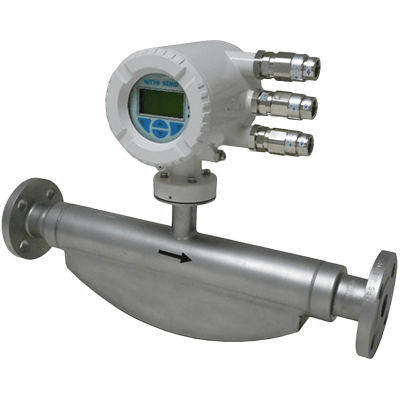What Is a Mass Flowmeter?

A mass flowmeter is a device designed to measure the mass flow rate of liquids or gases in a fluid stream. Unlike volume flowmeters that measure the volumetric flow, mass flowmeters directly quantify the mass of the fluid passing through them over time. Suitable for both liquid and gaseous fluids, these meters are key in various applications but tend to be more costly than volumetric flowmeters and may require specialized knowledge for installation and operation.
Uses of Mass Flowmeters
Mass flowmeters are employed across different industrial sectors:
- Oil and Gas Industry: For mixing liquids and gases in refining and gas processing, where varying gas compositions and densities are common.
- Chemical Plants: In chemical manufacturing, for accurate feeding of raw materials and reactants, and measuring product output.
- Power Plants: To measure fuel supply and exhaust gases, aiding in efficient power generation and ensuring compliance with environmental standards.
Principle of Mass Flowmeters
Mass flowmeters operate based on principles that leverage physical changes or effects related to fluid mass. They measure mass flow directly, utilizing various physical properties of the fluid. For example, in Coriolis effect-based meters, the fluid mass affects the vibration’s phase difference and displacement. In thermal conduction meters, the mass flow rate is related to the fluid’s thermal conductivity.
Types of Mass Flowmeters
The most commonly used mass flowmeters include Coriolis and thermal types:
1. Coriolis Flowmeter
Coriolis flowmeters measure the mass flow rate by utilizing the Coriolis effect. They feature oscillating tubes through which the fluid flows. The Coriolis force generated affects the tubes’ vibration, and the resulting phase difference and displacement allow for accurate mass flow rate calculation. These meters are highly accurate and versatile, suitable for various fluids, but can be sensitive to external vibrations and challenging to clean.
2. Thermal Flowmeter
Thermal flowmeters use heat transfer principles to measure the mass flow rate, particularly effective with gases. They calculate flow by detecting temperature differences, allowing estimation of mass flow rate based on changes in thermal energy and conduction velocity. These meters are notable for their wide temperature measurement range and low-pressure drop, but they can be affected by contamination, making them less suitable for gases containing oil mist.